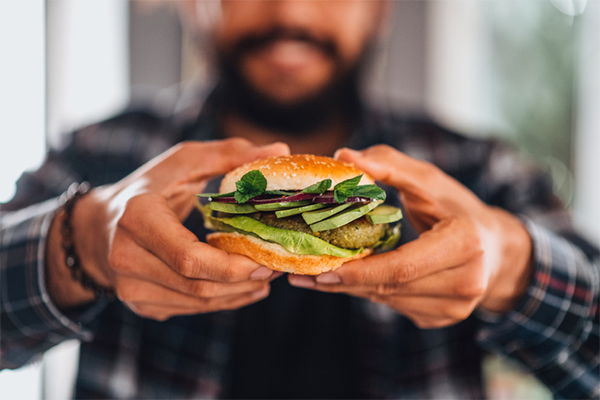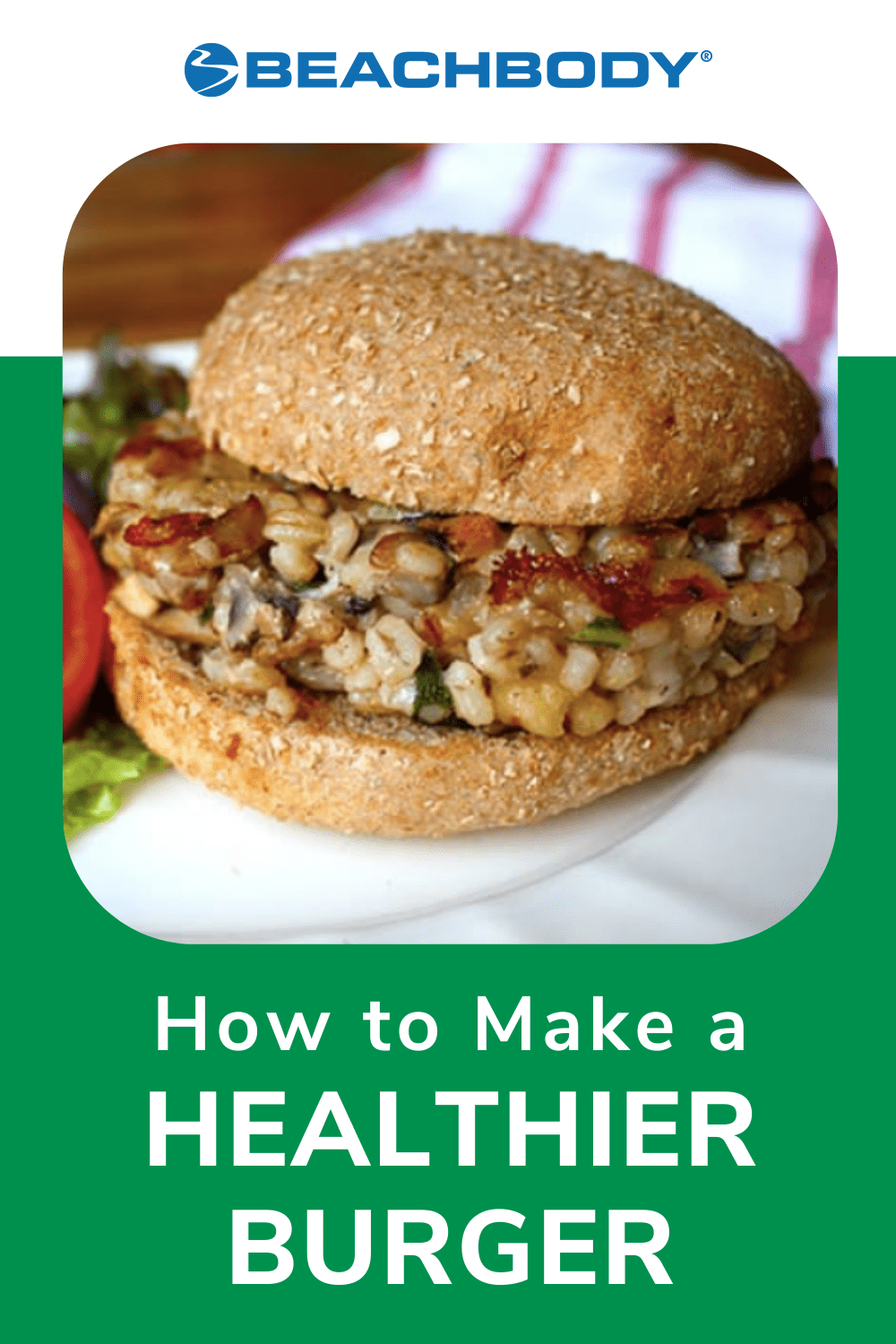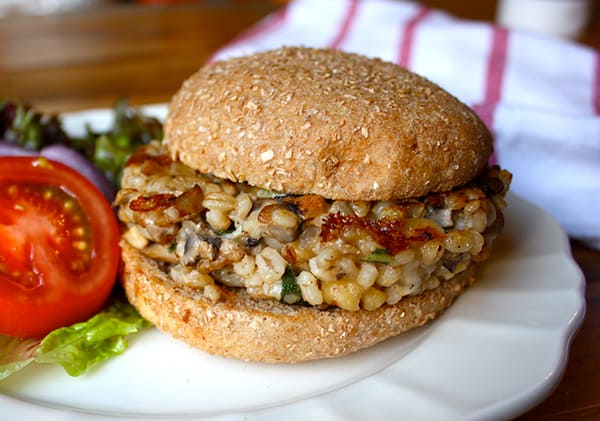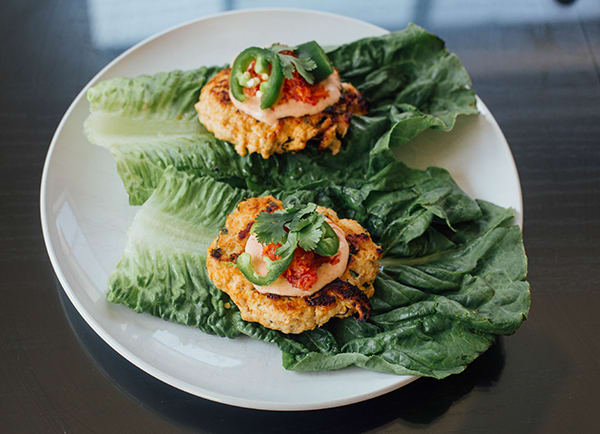All Burgers Aren’t Bad For You: Here’s How to Make a Healthier One

Burgers loaded with special sauce and layers of cheese sandwiched between a giant bun isn’t exactly the model for a wholesome, nutritious meal — especially when it comes from a fast-food chain.
But, burgers don’t have to be completely off-limits when you’re trying to eat right. I
n fact, when incorporated into a healthy, varied diet, research shows red meat can be a great source of high-quality protein and essential nutrients such as iron, zinc, and vitamin B12.
And poultry, including chicken and turkey, can be an excellent source of highly-digestible proteins, B vitamins, iron, zinc, and copper.
So where does it all go wrong? The bun, toppings, and size of the patty, for starters.
While burgers are a fast-food staple usually limited to cheat days, homemade versions can be healthy and delicious.
Check out these hacks to craft tasty, healthy burgers.
1. Trim the Fat, but Keep It Juicy
Choosing lean meat, whether that’s ground beef, turkey, or chicken, is an easy way to reduce saturated fat content.
According to the USDA the term “lean” is used to describe food that has less than 10 grams of fat and four and a half grams of saturated fat per 100 grams.
“Extra lean” means there is less than five grams of fat and two grams of saturated fat per 100 grams.
When you’re shopping for meat, a quick way to sort through the options is by looking for meat that’s between 90 and 95 percent lean.
Just keep in mind that while leaner options cut fat and calories, they can also dry the heck out of your burger.
To keep it as juicy as it can be, handle the meat as little as possible when forming the patties.
Once the burgers are on the grill or in the skillet, avoid pressing them with a spatula, which can release even more juice.
2. Cut the Meat
While lean meat isn’t unhealthy in the right portions, homemade burgers are a great opportunity to sneak in tons of veggies, even if it’s not a vegetarian burger.
Chopped mushrooms, greens, and onions, or grated sweet potatoes, carrots, and zucchini offer delightful flavors, and they add some extra juices back into the burger, too!
Grains, beans, and pulses can also make an appearance; try black beans, lentils, quinoa, or rice.
Add these ingredients to the raw meat mixture before shaping the patties, then cook like usual.
3. Spice It Up
Spices and herbs not only add tons of flavor to burgers, but also contain antioxidant compounds, like polyphenols.
Oregano, thyme, sage, rosemary, and saffron have some of the highest levels, especially in their dried form.
Add a few shakes of these dried spices into the meat or veggie mixture before you cook the patties.
Then, before you serve up the dish, add fresh or chopped herbs on top of your burger before eating for an extra bit of seasoning.
4. Size It Right

Have you ever ordered a burger at a restaurant that’s nearly as big as your face?
It might seem like a tempting challenge to eat it all, but chances are you’ll be left in a massive food coma if you do.
When you’re making burgers at home, you can control the patty size to something more reasonable and healthy.
One serving size of protein is about a 4-ounce patty (think the the size of a deck of cards), which should shrink to about three ounces during the cooking process.
5. Choose Your Toppings Wisely
A thick layer of salt-, sugar-, and fat-laden toppings is the quickest way to sabotage a healthy burger.
Swap out sugary ketchup for salsa, or try making your own homemade ketchup.
And for a little creaminess, opt for guacamole instead of mayo.
Use the real estate on top of the burger as an opportunity to pack on fresh or grilled veggies, such as tomato, peppers, onion, greens, and mushrooms.
With all the flavor and texture that this provides, you won’t miss that mysterious special sauce concoction.
6. Think Outside the Bun
While going naked (no bun at all) is always one option, there are other healthy alternatives to the traditional white bun that provide a more authentic burger-eating experience.
Try a low-carb option, like cloud bread. It’s easy to make, and two slices only has 94 calories and nine grams of protein.
Or, sandwich your burger between large portobello mushroom caps, rounds of veggies like eggplant or sweet potato, or lettuce leaves.



